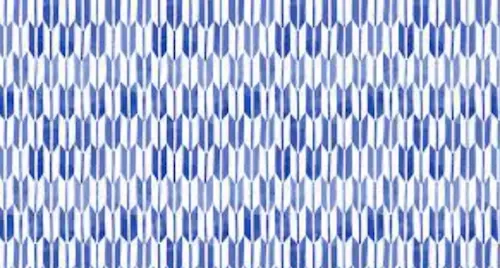
Japanese textile patterns
The story of 7 common traditional Japanese fabric patterns.
Founded in 660 BC and ranked third in the world by GDP, Japan is one of the oldest and most prosperous modern nations. After more than 2,600 years of existence, Japan has established itself as a nation known for the richness of its history and culture. Whether it's art, cuisine, or religion, Japan has played a major role in almost every facet of modern human history. One specific niche in which Japan has developed a long-standing influence is textile art, particularly patterned fabrics. In this article we will look at some of the most iconic and traditional patterns in Japanese fabrics.
Seikai Ha (Seigaiha ; 青海波)
One of the most recognizable designs on this list, the traditional seigaiha pattern first appeared in Japan in the 6th century, after Japanese mapmakers imitated it from ancient Chinese maps. Both cultures used the pattern of repeated semicircles to represent bodies of water on maps, hence the wavy shape of the surface pattern. Over the centuries, seigaiha has become an iconic Japanese pattern, not only associated with historic Japanese textile art, but also found in art, clothing, tableware, and more.
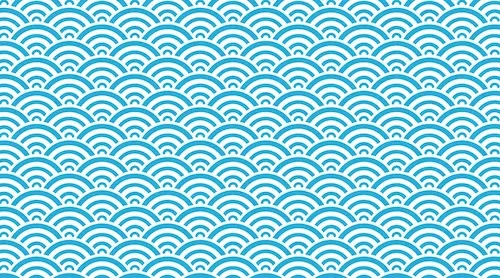
Asa No Ha (Asanoha ; 麻の葉)
Another of the most famous Japanese textile patterns, the six-sided star shape, emblematic of the asanoha pattern, is inspired by hemp leaves. Hemp is known to be a sturdy, resilient and fast-growing plant that has become a symbol of strength and vitality in Japan. Because of this association, asanoha is commonly found on children's clothing and items, in the hopes of helping them develop the same health qualities as the plant.

Shippo (Shippo-tsunagi ; 七宝つなぎ)
The shippo pattern originated from traditional Japanese cloisonné (enamel art) and came to be widely used in all styles of Japanese art and textiles. Its name means "seven treasures" - a reference to the seven treasures of Buddhism - and its circular shape represents endless harmony. The J-Life fabric collection in this surface pattern also combines the look of the Japanese shibori (Japanese tie dye) dyeing technique with the shippo pattern to create a geometric textile pattern that draws inspiration from multiple traditional Japanese art forms .
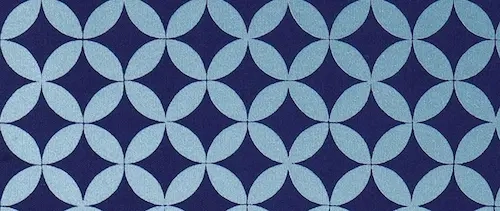
Igeta (井桁)
This simple pattern consists of a grid that resembles the "hashtag" or pound (#) symbol. The origins of the igeta pattern are unclear, but what is known is that it dates back centuries in Japanese art and textiles and represents the wooden frame of a well. Wells are considered powerful and spiritual objects in Japan, primarily due to the abundance of folklore surrounding them and their connection to water, a symbol of purity and the flow of life itself.
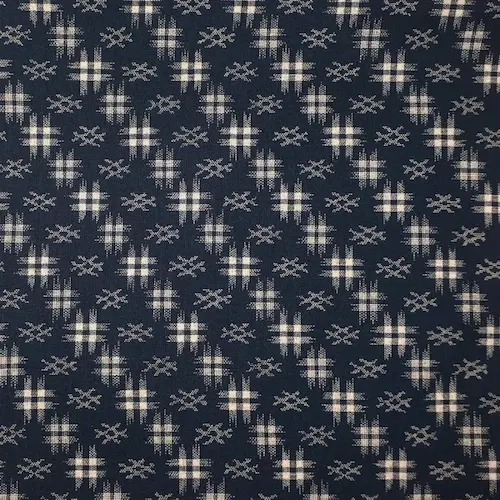
Kanoko (鹿子)
The Kanoko pattern is another Japanese fabric pattern that, like shippo, is inspired by a type of Japanese shibori (tie dye). This simple spotted pattern is often called "fawn skin" or "fawn spots", due to its similarities to the spotted colorings found on the back of a baby (fawn) deer.
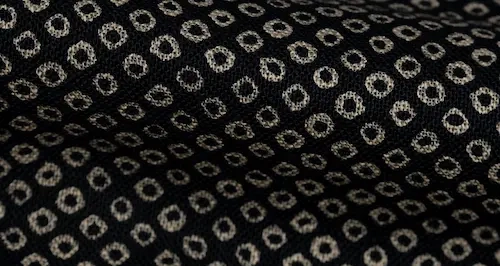
Same-Komon (鮫小紋)
The Same-Komon pattern looks a bit like a spotted version of the seikai ha pattern, but it is actually a unique surface pattern. It owes its name to its resemblance to the skin of a shark. Same-komon is commonly used as a background pattern for other, more complex designs, notably in kimonos (着物), traditional Japanese clothing.
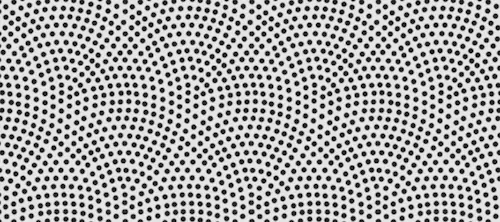
Yagasuri (Yabane ; 矢羽根)
The geometric shape of the yagasuri pattern represents the fletching (feathers) at the ends of the arrows. Archery was an important art in ancient Japanese society. In 18th and 19th century Japan, it was tradition for brides to receive a kimono decorated with this design. Like an arrow that is shot, the bride is not supposed to return [to her parents]. Since then, this pattern has become a symbol of wealth and luck for those who wear fabrics of this type.
